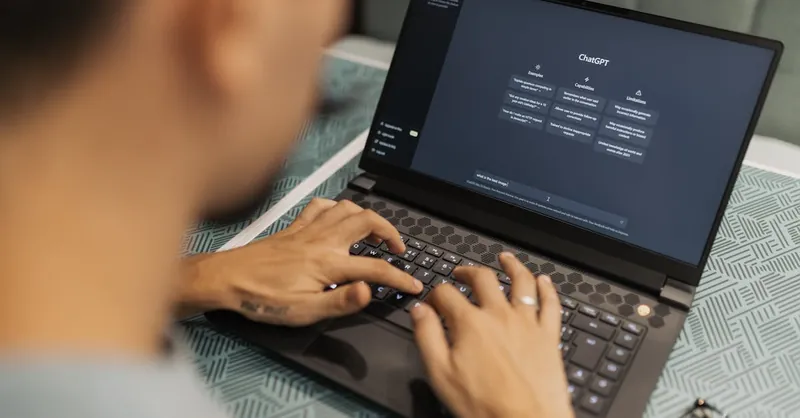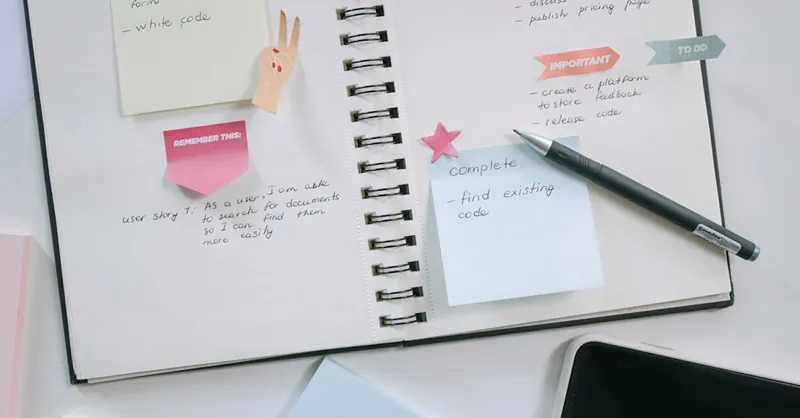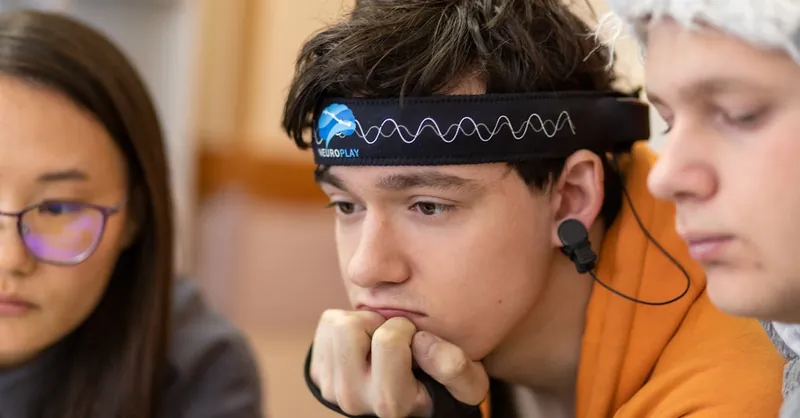Top AI Tools for Improving Focus and Concentration
Category: Productivity & Automation
Unlock Peak Productivity with AI-Powered Focus Tools
For professionals, entrepreneurs, and tech enthusiasts forging ahead in fast-paced environments, maintaining focus and concentration is paramount yet challenging. You’ve likely searched “AI tools for improving focus and concentration” because distractions, multitasking, or mental fatigue are holding you back from achieving your full productivity potential. You don’t need a generic guide; you want actionable insights about the most effective AI-driven solutions tailored to heighten your mental clarity and sustain your attention. This post dives into cutting-edge AI technology designed specifically to enhance concentration, streamline workflows, and automate focus-enhancing strategies. Unlike broad articles that merely list apps, here you’ll find a structured, well-researched breakdown of tools categorized by their unique benefits—from AI-powered noise cancellation to personalized focus coaching systems—all geared toward boosting your productivity sustainably. Whether you’re a seasoned tech user or beginning to tap into AI for personal optimization, this guide offers clear, expert-level information that helps you choose exactly the right tools to transform how you work and focus. Read on to discover the best AI innovations that can help you master your attention span and unlock unprecedented efficiency.
- Unlock Peak Productivity with AI-Powered Focus Tools
- Understanding the Science of Focus and How AI Can Help
- AI-Powered Distraction Blockers: Smarter Solutions to Manage Digital Interruptions
- Personalized AI Productivity Assistants: Tailoring Focus to Your Workflow
- AI-Based Mindfulness and Meditation Tools: Enhancing Concentration Through Personalized Stress Reduction
- Intelligent Noise Cancellation and Ambient Sound Generators: Crafting Optimal Focus Environments
- Focus Analytics and Cognitive Tracking: Unlocking Deeper Insights for Enhanced Concentration
- Automation of Routine Tasks to Free Mental Bandwidth
- Integrating AI Tools with Your Existing Productivity Systems: Strategies for Seamless Workflow Optimization
- Assessing Privacy and Data Security in AI Productivity Tools
- Future Trends in AI for Focus and Concentration: Neurofeedback AI and Advanced Adaptive Learning Platforms
Understanding the Science of Focus and How AI Can Help
Focus is a complex neurological process governed primarily by the brain’s prefrontal cortex, which manages attention, decision-making, and impulse control. When we concentrate on a task, neural pathways related to goal-directed behavior strengthen, allowing the brain to filter out distractions and prioritize relevant stimuli. However, chronic distractions, mental fatigue, or stress can impair this system, fracturing our attention and reducing productivity. Here, AI tools come into play by leveraging machine learning algorithms that monitor behavioral patterns, cognitive load, and environmental factors to optimize attention spans dynamically.
By continuously analyzing data such as typing rhythms, eye movement, and even voice cadence, AI-powered platforms can detect when focus begins to wane and intervene with personalized strategies. For example, some tools use predictive modeling to recommend micro-breaks at optimal times, while others implement adaptive noise cancellation tuned to individual sensitivity levels. Furthermore, AI can simulate techniques from cognitive neuroscience, such as spaced repetition and gamified task prioritization, to strengthen attention control mechanisms over time. This synergy between neuroscience and AI technology transforms traditional focus enhancement from static methods into fluid, real-time, and personalized interventions—making it easier than ever to sustain high levels of concentration and mental clarity throughout demanding workdays.

Image courtesy of Google DeepMind
AI-Powered Distraction Blockers: Smarter Solutions to Manage Digital Interruptions
In today’s hyperconnected world, digital distractions like social media, incessant notifications, and irrelevant apps are some of the biggest enemies of focus. Traditional blockers often rely on basic timers or manual settings, but AI-powered distraction blockers revolutionize this approach by intelligently detecting and adapting to your distraction patterns in real time. These advanced apps use machine learning to analyze your digital behavior—such as websites visited, app usage frequency, and notification engagement—to autonomously prioritize which interruptions to block or allow based on your current focus needs.
Leading AI distraction blockers not only silence unwanted pings but also provide personalized insights and dynamic scheduling features. For example, some tools automatically pause social media feeds during periods identified as high cognitive workload, while others use natural language processing to classify notifications by importance, ensuring urgent messages break through without overwhelming you. Additionally, several AI apps incorporate user feedback and task context to continuously refine their blocking strategies, creating an evolving ecosystem that balances productivity with necessary connectivity. By leveraging these AI-driven distraction blockers, professionals can dramatically decrease attention fragmentation and reclaim uninterrupted work sessions, catalyzing improved concentration and task completion rates.
Top Features of AI Distraction Blockers
- Behavioral pattern recognition to identify distraction triggers
- Adaptive blocking schedules personalized to individual workflow
- Priority notification filtering using natural language understanding
- Insight dashboards showing digital consumption trends and focus metrics
- Seamless integration with calendars and task managers for context-aware focus modes
Choosing the right AI-powered distraction blocker can transform your digital environment into a productivity-enhancing space, where focus flows without frequent interruptions. In the next sections, we will explore some of the top-rated apps that exemplify these capabilities and explain how to tailor their features to your unique professional demands.

Image courtesy of Matheus Bertelli
Personalized AI Productivity Assistants: Tailoring Focus to Your Workflow
While AI distraction blockers manage interruptions, personalized AI productivity assistants take your focus to the next level by adapting to your unique work habits and optimizing task management dynamically. These smart assistants leverage advanced machine learning algorithms to learn from your daily routines, deadlines, and cognitive performance patterns, then tailor their recommendations to help you prioritize effectively and maintain sustainable concentration. By continuously monitoring how you interact with projects, calendars, and communication channels, they provide context-aware guidance that aligns with your most productive times and workload capacities.
Key functionalities of these AI assistants include:
- Dynamic Task Prioritization: Instead of static to-do lists, these platforms analyze your deadlines, task complexity, and historical completion rates to suggest the most impactful tasks to focus on each day.
- Intelligent Scheduling: They recommend optimal work and break intervals based on productivity rhythms, leveraging techniques like the Pomodoro method enhanced by predictive analytics to prevent burnout and mental fatigue.
- Contextual Reminders: Rather than generic alerts, these assistants send timely nudges that consider your current activity, alerting you when it’s best to shift focus, take restorative breaks, or resume deep work.
- Workflow Integration: Smoothly syncing with your calendar, email, project management tools, and communication apps, these assistants create a holistic productivity ecosystem that reduces manual planning and keeps distractions at bay.
By incorporating personalized AI productivity assistants into your workflow, you gain a highly adaptive focus partner that evolves with your workstyle, enabling you to maintain peak concentration without relying solely on willpower. These tools empower knowledge workers, creatives, and leaders to make smarter decisions about how they allocate their attention—transforming busy schedules into structured, efficient, and balanced workflows that fuel long-term productivity gains.

Image courtesy of Matheus Bertelli
AI-Based Mindfulness and Meditation Tools: Enhancing Concentration Through Personalized Stress Reduction
Incorporating mindfulness and meditation practices into your daily routine is scientifically proven to boost focus, reduce stress, and improve cognitive function. However, traditional meditation methods can be challenging to sustain consistently, especially for busy professionals. This is where AI-guided mindfulness and meditation apps come into play—offering personalized, data-driven sessions designed to optimize your mental clarity and concentration in real time.
These AI-powered platforms analyze biometric data (like heart rate variability and breathing patterns), user feedback, and behavioral cues to tailor meditation exercises and mindfulness training specifically to your current stress levels and cognitive needs. By dynamically adjusting session lengths, focusing on targeted breathing techniques, or guiding you through visualization exercises, they maximize the stress-reducing benefits critical for sustaining attention. Additionally, many tools incorporate machine learning algorithms that track your progress and adapt future meditations to deepen concentration, helping to build resilient mental habits that counteract distraction and mental fatigue.
Key Benefits of AI-Guided Mindfulness and Meditation Tools
- Personalized meditation experiences based on physiological and psychological data
- Real-time stress detection with adaptive session adjustments
- Enhanced cognitive performance through sustained mindfulness training
- Progress tracking and insights to reinforce focus-enhancing routines
- Integration with productivity apps to remind and encourage regular practice for peak concentration
In essence, AI-based mindfulness tools provide a seamless, scientifically informed pathway for professionals seeking to cultivate deep focus by managing stress proactively. Integrating these technologies into your productivity ecosystem not only sharpens attention but also promotes holistic well-being—foundational for unlocking sustained high performance in any demanding work environment.

Image courtesy of Mikhail Nilov
Intelligent Noise Cancellation and Ambient Sound Generators: Crafting Optimal Focus Environments
Creating an ideal auditory environment is crucial for maintaining deep focus and sustained concentration. AI-powered noise-canceling headphones and ambient sound generators have emerged as game-changers in this realm, harnessing advanced machine learning to intelligently filter disruptive noises and deliver personalized soundscapes that enhance cognitive performance. Unlike traditional noise cancellation that relies on fixed algorithms, these AI-driven devices dynamically analyze the surrounding sound environment and your brain’s response patterns, adjusting noise suppression levels in real time to block out distractions without isolating you from important auditory cues.
Complementing intelligent hardware, AI-enabled ambient sound apps curate adaptive background auditory experiences—from calming white noise, natural landscapes, to binaural beats—scientifically proven to boost attention and reduce mental fatigue. These platforms often integrate user feedback and biometric signals, such as heart rate or focus tracking, to fine-tune sound frequencies and rhythms that align with your optimal productivity zones. The synergy of AI noise cancellation and personalized ambient sound generation fosters a sensory setting tailored to your unique neural and environmental context, making it significantly easier to enter and sustain flow states during demanding tasks.
Key Advantages of AI-Enhanced Noise Control and Ambient Sound Tools
- Real-time environmental noise adaptation for dynamic sound filtering
- Personalized soundscapes optimized for concentration and cognitive endurance
- Integration with biometric feedback for continual tuning of auditory stimuli
- Reduced sensory overload leading to decreased mental fatigue and distraction
- Seamless compatibility with workstations and mobile setups for productivity on the go
Incorporating these intelligent auditory solutions into your productivity toolkit can transform noisy, chaotic settings into calm, focus-promoting environments—empowering you to achieve sharper mental clarity and longer-lasting attention spans, no matter where you work.

Image courtesy of K Zoltan
Focus Analytics and Cognitive Tracking: Unlocking Deeper Insights for Enhanced Concentration
Advancing beyond reactive focus aids, AI-driven focus analytics and cognitive tracking tools provide a revolutionary approach by actively monitoring brainwave patterns, eye movements, and behavioral data to deliver personalized insights and actionable recommendations that directly improve concentration. These systems leverage sophisticated neural interfaces or integrate data from wearables and computer interactions to detect subtle shifts in cognitive states—such as lapses in attention, mental fatigue, or overload—allowing users to intervene early before focus deteriorates significantly.
By continuously analyzing metrics like alpha and theta brainwave activity, pupillometry, or typing dynamics, these AI tools construct a real-time mental profile that reveals when your brain is primed for deep work versus when it needs rest or stimulation. Some platforms even employ predictive analytics and machine learning models to suggest optimal task switching intervals, tailored cognitive exercises, or environmental adjustments (like lighting or noise levels) to sustain peak concentration. This data-driven approach transforms productivity from guesswork into measurable performance optimization, enabling users to:
- Identify personalized focus patterns and cognitive strengths or weaknesses
- Receive adaptive, evidence-based recommendations for maximizing mental energy
- Track progress over time with detailed cognitive performance dashboards
- Integrate seamlessly with productivity tools to automate reminders and task prioritization based on attention levels
In essence, focus analytics and cognitive tracking empower professionals to transcend traditional productivity tactics by turning brain and behavior data into a dynamic feedback loop for sustained attention. Integrating these AI innovations can substantially enhance your ability to maintain deep focus, reduce cognitive fatigue, and elevate overall work efficiency in increasingly demanding environments.
Image courtesy of Leeloo The First
Automation of Routine Tasks to Free Mental Bandwidth
One of the most impactful ways AI enhances focus and concentration is by automating repetitive, mundane tasks that otherwise drain your cognitive resources. By offloading routine activities such as email sorting, calendar management, data entry, and report generation to AI-driven automation tools, you free up significant mental bandwidth—allowing your brain to allocate more energy toward high-priority, deep work. This reduction in cognitive load minimizes decision fatigue and task-switching costs, both major contributors to fragmented attention and reduced productivity.
Cutting-edge AI automation platforms leverage natural language processing (NLP), machine learning, and robotic process automation (RPA) to identify patterns in your workflow and execute or suggest actions proactively. For example:
- Smart email triaging: AI filters and categorizes emails based on priority, flags urgent requests, and even drafts responses to routine inquiries, so you spend less time managing your inbox and more time focusing on critical projects.
- Intelligent scheduling assistants: These tools analyze your availability, preferences, and workload to automate meeting bookings, suggest optimal time blocks for focused work, and reduce calendar conflicts without manual intervention.
- Automated data processing: AI bots can extract, organize, and summarize relevant data from disparate sources, enabling quicker decision-making without the mental overhead of sifting through volumes of information.
- Workflow orchestration: Integrated AI platforms streamline task handoffs, trigger subsequent actions automatically, and ensure consistency in repetitive processes—all while reducing the need for constant oversight.
By incorporating these AI-driven automation solutions, professionals experience a profound boost in sustained attention, as the mental clutter associated with managing repetitive tasks is significantly diminished. This creates a cognitive environment optimized for clarity, allowing you to enter longer flow states and enhance overall productivity without the drain of low-value activities.
Key Benefits of AI Automation for Focus
- Reduction of cognitive overload by delegating repetitive tasks to AI
- Enhanced mental clarity through minimized task-switching demands
- Increased capacity for deep, uninterrupted work sessions
- Continuous learning and adaptation of AI tools to evolving workflows
- Scalable productivity gains across diverse professional roles
Harnessing AI to automate routine aspects of your workflow not only conserves mental energy but also cultivates an ecosystem where sustained concentration becomes the norm rather than the exception. This foundational shift empowers professionals to unlock new levels of efficiency and focus in an increasingly complex work landscape.

Image courtesy of Ivan Samkov
Integrating AI Tools with Your Existing Productivity Systems: Strategies for Seamless Workflow Optimization
Maximizing the benefits of AI focus tools requires more than standalone usage—it demands strategic integration with your existing project management, calendar, and communication platforms. By embedding AI-driven concentration enhancers within the tools you already rely on daily, you create a cohesive productivity ecosystem that reduces friction, streamlines task flow, and ensures that focus optimization is contextually relevant and actionable.
How to Combine AI Focus Tools with Popular Productivity Apps
-
Sync AI Assistants with Calendar Apps: Connect AI-powered scheduling and focus assistants to Google Calendar, Microsoft Outlook, or Apple Calendar to automate block scheduling for deep work sessions. These integrations allow AI tools to dynamically suggest optimal focus periods and micro-breaks based on real-time workload and meeting patterns, eliminating manual planning and reducing cognitive overhead.
-
Embed Distraction Blockers into Project Management Systems: Many AI distraction blockers offer plugins or API integrations for platforms like Asana, Trello, or Monday.com. This allows the blocker to detect when you’re actively working on critical tasks and automatically mute irrelevant notifications or restrict access to distracting websites during designated focus intervals.
-
Leverage AI Analytics with Task Trackers: Incorporate cognitive tracking and focus analytics into task management apps like Todoist or ClickUp. This synergy empowers AI tools to analyze your concentration levels per task or project, providing personalized productivity insights and adjusting priorities or reminders accordingly to maximize sustained attention.
-
Integrate Mindfulness and Ambient Sound Apps within Communication Suites: Embedding AI-guided mindfulness prompts or adaptive ambient sound generators within tools like Slack or Microsoft Teams can help induce timely focus resets during high-stress phases, reducing burnout and mental fatigue without interrupting team collaboration.
Benefits of Integration for Workflow Optimization
- Unified Focus Environment: Bringing AI focus capabilities into your core productivity platforms reduces context switching, ensuring that focus-enhancing features operate seamlessly within your natural work rhythm.
- Data-Driven Personalization: Integrations aggregate data across tools to enable more accurate AI recommendations tailored to your specific workflow patterns and cognitive states.
- Automation and Proactivity: Connected systems allow AI to proactively adjust your schedule, notifications, and ambient settings based on evolving priorities and focus levels without manual input.
- Consistent Focus Reinforcement: Embedding AI tools within daily workflows cultivates habitual engagement with focus strategies, making sustained concentration an integral part of your productivity culture.
By methodically integrating AI-powered focus tools with your project management and calendar applications, you build an intelligent, automated workflow that fosters continuous, high-quality concentration. This approach transforms fragmented productivity tactics into a streamlined, AI-optimized system—ultimately driving deeper focus, better task completion, and enhanced overall efficiency.

Image courtesy of Photo By: Kaboompics.com
Assessing Privacy and Data Security in AI Productivity Tools
When selecting AI tools to enhance focus and concentration, privacy and data security are critical considerations that should never be overlooked. These AI-driven platforms often collect sensitive behavioral, biometric, and contextual data—including typing patterns, heart rate, location, and usage habits—to deliver personalized focus enhancement. While this data personalization can significantly boost productivity, it also raises important questions about how your information is stored, processed, and shared.
Key Privacy Considerations for AI Focus Tools
- User Consent and Transparency: Reputable AI productivity apps must obtain clear user consent before collecting data and provide transparent privacy policies detailing what data is gathered, how it is used, and who has access. Always review these policies to ensure compliance with regulations like GDPR or CCPA.
- Data Encryption and Secure Storage: Look for tools that use strong encryption protocols both during data transmission and at rest. This prevents unauthorized interception or breaches that could expose your personal or professional information.
- Minimal Data Collection Principle: Prioritize AI tools that practice data minimization—collecting only the essential information necessary for functionality—to reduce privacy risks and limit exposure in case of security lapses.
- User Control and Data Portability: Effective AI platforms empower users with control over their data by offering settings to manage, export, or delete collected information. This autonomy is crucial for maintaining long-term trust and compliance.
- Third-Party Sharing Policies: Understand whether and how your data might be shared with partners, advertisers, or analytics providers. Opt for AI tools that declare strict restrictions on third-party data access, especially those prohibiting sale or unauthorized use.
Enhancing Security When Implementing AI Focus Solutions
- Use Multi-Factor Authentication (MFA): Secure your accounts by enabling MFA where available, adding an extra layer of defense against unauthorized access.
- Regularly Update Software: Keep AI productivity apps and connected devices up to date to benefit from the latest security patches and vulnerability fixes.
- Choose Established Providers: Select AI tools from providers with proven security track records and clear commitments to privacy, avoiding lesser-known or unsupported solutions.
- Review Permissions Carefully: Before installing AI tools, check requested permissions to ensure they align with functional requirements, avoiding apps that ask for excessive system access.
By carefully evaluating privacy and security features alongside focus-enhancing capabilities, you not only protect your sensitive data but also foster a trustworthy environment that supports sustained, distraction-free productivity. Investing time in these assessments ensures your AI productivity arsenal is both powerful and secure—foundations essential for unlocking your ultimate concentration potential.

Image courtesy of Towfiqu barbhuiya
Future Trends in AI for Focus and Concentration: Neurofeedback AI and Advanced Adaptive Learning Platforms
As AI technology continues to evolve, emerging innovations like neurofeedback AI and advanced adaptive learning platforms are poised to revolutionize how we enhance focus and concentration, driving productivity breakthroughs beyond current capabilities. Neurofeedback AI systems integrate cutting-edge brain-computer interface (BCI) technology with machine learning algorithms to monitor neural activity in real time, offering personalized feedback that trains users to self-regulate attention and cognitive states more effectively. Unlike passive analytics tools, these platforms actively engage the brain’s plasticity by providing instantaneous signals—through visual, auditory, or haptic cues—that help reinforce optimal focus patterns, reduce mental fatigue, and accelerate cognitive resilience.
Simultaneously, advanced adaptive learning platforms utilize deep AI models to customize cognitive training exercises and productivity workflows dynamically, based on continuous assessment of an individual’s attention span, learning style, and task complexity. By leveraging multimodal data streams—including behavioral metrics, biometric sensors, and contextual inputs—these systems craft hyper-personalized interventions that evolve alongside the user’s mental performance and changing work demands. Key features expected to define the future of AI-enhanced focus include:
- Real-time neuroadaptive feedback loops, enabling users to fine-tune focus states with unprecedented precision.
- Integration of multimodal biometric data, such as EEG, heart rate variability, and eye-tracking, for holistic cognitive optimization.
- AI-driven cognitive training regimens that adapt session content and difficulty based on individual progress and fatigue signals.
- Seamless interoperability with digital ecosystems, allowing neurofeedback and adaptive learning tools to synchronize with productivity apps and environmental controls.
- Enhanced predictive analytics that anticipate cognitive drop-offs and proactively recommend restorative strategies or task adjustments.
These future developments represent a paradigm shift from reactive focus aids toward fully immersive, AI-powered mental fitness platforms that empower professionals to sustain peak attention levels amid growing cognitive demands. By investing in and adopting these next-generation tools early, individuals and organizations can unlock transformative productivity gains, reduce burnout, and cultivate durable focus habits—setting a new standard for workplace efficiency driven by neuroscience-informed AI innovation.

Image courtesy of Михаил Крамор
